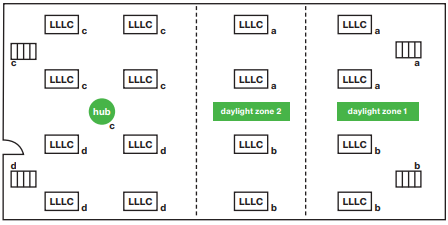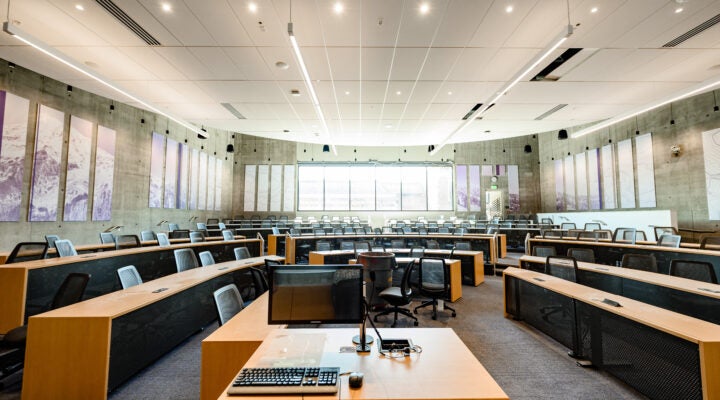How you communicate the design intent of a Luminaire Level Lighting Controls (LLLC) system can make the difference between a great lighting project and one you’d like to forget. Developing a sequence of operations (SOO) is the vital link between how a system is designed and how it gets set up.
Who’s on first?
Responsibility for developing the SOO can often be a gray area between contractors, product specifiers, and other relevant parties. Ensure this is discussed early in the process and the role is assigned.
Timing is everything
For new construction, the SOO should be completed before construction documents (bids) are finished. For retrofit or tenant improvements, the SOO should be developed with stakeholder input before installation begins.
Method 1: Basic SOO matrix
The basic SOO matrix provides an at-a-glance view for each space type and control strategy. It is well suited for the start of projects—because it can effectively communicate basic control strategies and intent to owners and users. This allows stakeholders to provide meaningful input.

Method 2: Detailed SOO matrix
Similar to the basic SOO matrix, the detailed SOO matrix will include detailed parameters for how each control method will be implemented within a space type. This usually takes longer to develop as various stakeholders may need to provide input.
Most LLLC projects will require a hybrid approach which includes elements of all three SOO methods outlined in this guide. What matters most is that design intent is being communicated to the stakeholders who will be programming the system—and eventually the people.
Method 3: Narrative SOO matrix
The narrative SOO matrix may be seen on construction specs or directly on lighting or electrical plans. Typically, these call out the space types and include a short narrative describing desired operation. Narrative matrixes are extremely helpful for downstream stakeholder groups like tenants and facility staff. They may be accompanied by a basic or detailed matrix to provide context.
Example SOO matrix for an open office
This open office design uses a LLLC system with integrated sensors and a connected gateway. The drawing has a legend to easily identify system components. A detailed matrix with narrative references the drawing to communicate complete design intent.


Tips for Success
At the beginning of a project, work with stakeholders to drive alignment and consistency with definitions and nomenclature to be used in the SOO.
-
Define typical space types
-
Define control strategies
-
Define system components
-
Ensure the building owner or operator understands the SOO
